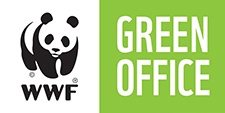Operations of the joint procurement unit
2020 was the first full year when Hansel provided services for Finland’s entire public administration. Hansel’s ownership changed in the merger in September 2019, with the State of Finland now owning 65 per cent of the company, and the Association of Finnish Local and Regional Authorities 35 per cent. The implementation of the integration strategy proceeded as planned, despite Covid-19’s negative impact on the development of some joint procurement projects.
The tasks and role of a central purchasing body are defined in legislation on public procurement and the Act on a Limited Liability Company Called Hansel Oy. The company’s customers are also specified in the Act on a Limited Liability Company Called Hansel Oy. They include ministries and their agencies, certain other government agencies, and universities and higher education institutions. From the beginning of 2019, the clientele expanded to municipalities, joint municipal authorities, parishes, and other municipal procurement units.
Hansel’s aim was to create savings for society by tendering and maintaining the joint procurement agreements for services and products that bring significant savings in the form of prices, quality and process costs. Hansel also offers procurement tendering and development services.
As a joint procurement unit, Hansel’s operation promotes high-quality procurement, fair treatment of suppliers and competition by organising tendering to ensure the markets work effectively.
Hansel’s operations are funded by service fees for joint procurement and the sales of expert services. The service fee is based on the purchases made, and it can be a maximum of 1.50 per cent, depending on the procured target. The average service fee in 2020 was 0.95% (0.96% in 2019).
Acts for the environment
Hansel is a member of the Green Office network, which consists of some 150 organisations in Finland. Green Office is an environmental programme developed by WWF Finland. Its objectives include promoting companies’ environmental responsibility and reducing the environmental burden caused by offices. In 2020, the significance of the office’s environmental programme was reduced from normal, as employees worked mostly remotely due to the coronavirus pandemic. The indicators monitored in the company’s environmental management system:
- consumption of electricity 51,051 kWh (goal is to reduce, 2019: 65,272 kWh)
- use of paper 70 reams per year (goal of less than 150 reams per year)
- the share of joint procurement projects with the ecolabel is 66% (target 70%)
- consumption pattern meter’s average response 81.3 points (goal 50 points)

Read next: Financial position and key figures

